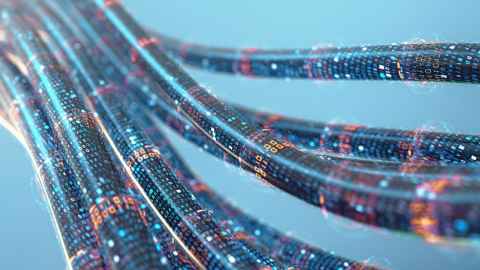How technology could be a real leveller
28 August 2020
Opinion: Mohsen Mohammadzadeh argues that we need national ‘soft infrastructure’ to reduce technology inequities that have been revealed during the pandemic.

How do we make sure nobody is left behind by technologies changing everyday life?
New technologies have ushered in a new stage of industrialisation, what is known as the Fourth Industrial Revolution, which is changing our economic and social lives. It is increasingly difficult to participate in any aspect of society without our smart gadgets and 5G Internet, but we need to ensure that people are not excluded from these changes.
We often talk about ‘smart technologies’, but those who are not familiar with them or not used to using these new technologies are often perceived as ‘not smart enough’ or ‘too old’. This is absolutely wrong.
It is also important to remember that not everyone is ‘connected’ equally, as has been highlighted by lockdown in these Covid-19 times, including by some of our university students.
Many of my colleagues at the School of Architecture and Planning work in the area of hard infrastructure such as roads, bridges and tunnels, which allow people to connect in person, to travel from one office to another, to drive from one city to another.
We also need to pay attention to what we call ‘soft infrastructure’ – a term that is used to describe that which informs the deployment of new technologies, which also allows people to connect, often in ‘remote’ ways. Soft infrastructure can be described as the plans, policies and regulations that guide and inform the way new technologies are used and the ethical and moral implications of their use – the Privacy Commission is developing guidelines and regulations for utilising new technologies such as surveillance technologies, drones and mobile apps to protect residents' privacy.
The problem we face is that the ‘soft infrastructure’ we do have is based on dominant scientific and engineering understandings. That is, by those who created these technologies, who are usually informed by their own (middle-class, educated) perspective, which don’t necessarily reflect or accommodate the diversity of local social and cultural norms – the real lives of people.
One good example of the need for better soft infrastructure is our last New Zealand Statistics Census in which the decision-makers mainly focused on the technical dimension of data collection via internet, but which overlooked people and their barriers and limitations to access or use of the internet.
While more than a third of New Zealanders over the age of 15 had downloaded the Covid-19 Tracing App after the ‘second wave’ of the pandemic hit New Zealand, it is important to remember that not everyone has a mobile phone, or is comfortable downloading an App, let alone an App that traces their movement. Should we put our trust in the Government, that our data will be protected? These are questions that need to be addressed, and understood, at a national level.
Technical and technological requirements such as access to broadband are a feature of hard infrastructure, but we need to develop soft infrastructure to prepare society to deploy the hard infrastructure. That is, the infrastructure that addresses the educational needs around these new technologies, as well as social equality in access to internet and tools and instruments.
Otherwise, these emerging technologies (and our increasing dependence on them) will generate increasing social, economic and cultural inequality. More importantly, it will homogenise society by normalising the behaviours and values and often the financial imperatives of those who created these technologies.
The pandemic has revealed the absolute necessity of access to fast broadband. In New Zealand, access to new technologies like fast internet should be recognised as the right for all residents; some countries such as Finland, France, Greece and India have recognised this as a right.
Access to broadband is partly hard infrastructure, but we need better soft infrastructure to empower local society and communities to use these technologies. For example, India largely invests in the advance of new technologies, particularly through the educational sector and based on their local cultural values.
Better ‘soft’ infrastructure, developed at a national level, will help prepare our nations, cities and citizens for these technologies, will help mitigate potential adverse effects (such as privacy breaches), will enable everyone to adopt these technologies and in a way that reduces rather than widens the gap between the haves and have-nots.
Understanding the social and political and economic impact of these technologies is crucial to both urban and national planning, and will help ensure that humans are put at the centre.
Focusing on the ‘soft’ infrastructure means building the economic and cultural health of the communities, and for the development of the regions - for the country to develop in a less city-centric way. In the long term it should allow for a better distribution of wealth at a national level. We are currently in a unique position to this opportunity to move forward, rather than be left behind.
We need national ‘soft infrastructure’ that considers the local, the complexity of society – that allows for that fact that we’re human beings, that we’re not machines.
Dr Mohsen Mohammadzadeh is from the School of Architecture and Planning.
This article reflects the opinion of the author and not necessarily the views of the University of Auckland.
Used with permission from Newsroom How technology could be a real leveller 28 August 2020.
Media queries
Alison Sims | Research Communications Editor
DDI 09 923 4953
Mob 021 249 0089
Email alison.sims@auckland.ac.nz